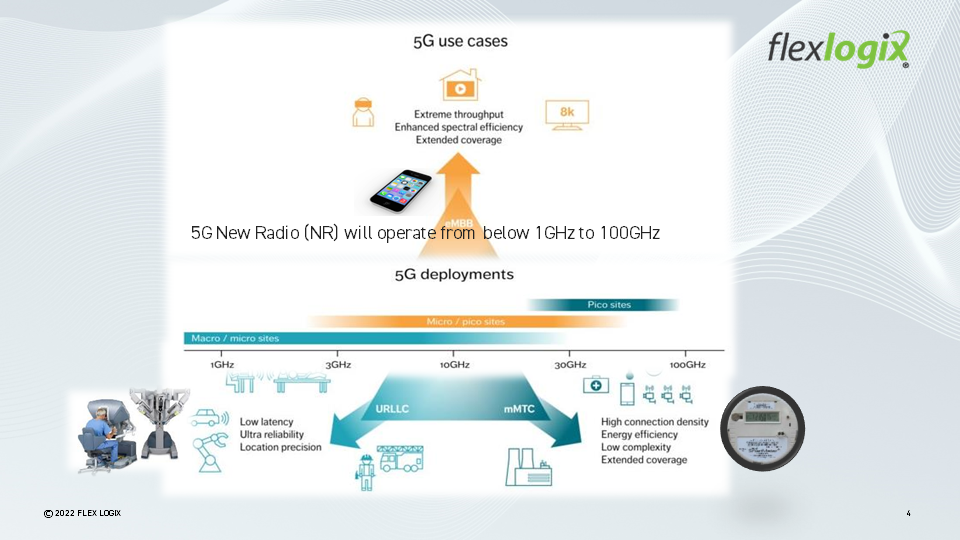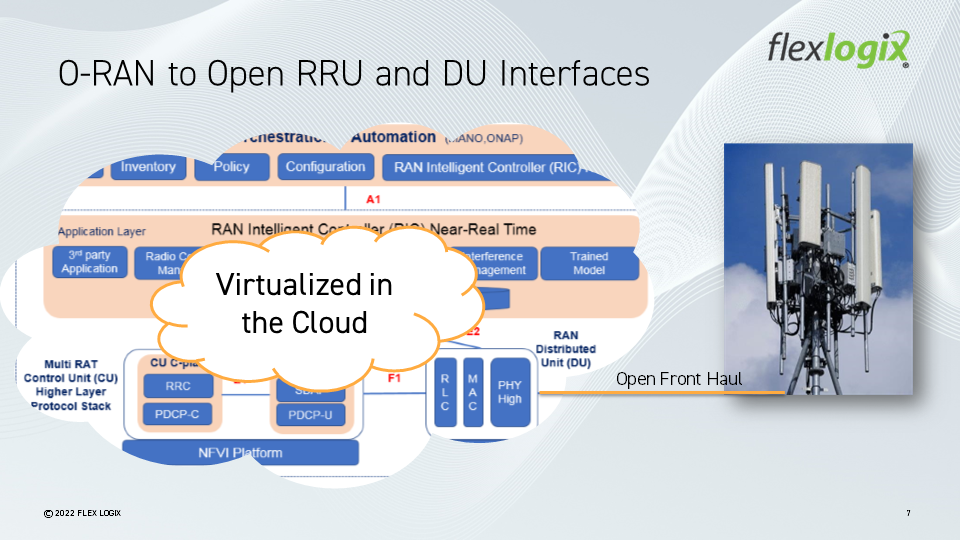The demands of 5G requires new designs to not only save power but also increase performance and by moving to advance power-saving nodes and by using eFPGAs will help to achieve these goals. This paper will introduce 5G and O-RAN, the complexity of these systems, and how flexibility could be beneficial. Then we will dive into how eFPGA can save power, cost and increase flexibility. By providing some examples of how eFPGA can be used for reconfigurability, it can also deliver to customers a flexible platform for carrier personalization with less power.
5G is known as a faster mobile phone experience but it is so much more. The changes include a 90% reduction in network energy, 1-millisecond latency, 10-year battery life for IoT devices, 100x more connected devices, 1000x more bandwidth and many others. These changes not only impact mobile devices but there are many other devices envisioned to connect to a 5G network across a large span of frequencies. These 5G New Radios (NR) will operate from below 1G to 100GHz supplying data to many different services.
The understood use case is Enhanced Mobile Broadband (eMBB) which includes enhance data rates, reduced latency, higher user density, more capacity and coverage of mobile devices. A better mobile phone experience (Fig. 1)

Fig 1- 5G use cases based on channel frequency used
Other applications will leverage the lower frequency channels and are referred to as Ultra-Reliable Low-Latency Communications (URLLC.) These devices require ultra-reliability, very low latency and high availability for vehicular communication, industrial control, factory automation, remote surgery, smart grids and public safety.
On the other end of the frequency spectrum, we have Massive Machine-Type Communications (mMTC.) The devices taking advantage of this very high frequency will be communication of low-cost, massive in number, battery-powered devices such as smart metering, logistics, field and body sensors. These devices will be on for a very short time, burst data and then shut down using very little power.
All these new devices and applications will need many 5G New Radios to serve them and a lot of equipment needs to be installed and tested. One proposal, to help speed this is to make the interfaces between the New Radio and the Distributed Unit (DU) open which is called Open Radio Access Network or O-RAN for short (fig 2.) where the DU is virtualized in the cloud on standard servers that can be bought off the shelf.

This allows the possibility of having more than one provider for the RAN and mixing with different backends. There will also be many different networks with different Radio Units for Macro sites, Micro sites and Pico sites. The combinations could be endless.
This transition is paved with many good intentions and uncertainty. Although based on “enhanced CPRI” or “eCPRI” there are unknown sideband signals or custom commands. Learn more about how eFPGA can help this transition and other 5G applications for eFPGA to save cost, power, and reduce latency by joining this webinar.
Also Read:
Why Software Rules AI Success at the Edge
High Efficiency Edge Vision Processing Based on Dynamically Reconfigurable TPU Technology
A Flexible and Efficient Edge-AI Solution Using InferX X1 and InferX SDK
Share this post via:





Comments
There are no comments yet.
You must register or log in to view/post comments.